The purpose of setting intentions for me is to help feel more in control and more grounded to the directions I want to go in my life. I have noticed that many people set intentions for the new year around this time. Since I am a child and family therapist I was curious to learn how to engage children in this activity. I decided to do a little research to further understand how to set intentions and determine some of the guidelines. Much of what I learned did not offer ways to engage kids so I decided that I would create an activity that I could add to my own practice because children need to feel more in control too. However, I also realized that there are different ideas and thoughts around what it means to set intentions. So first let me speak a little about what this means to me.
Setting intentions is like a goal but with less pressure. I can think of it like a to do list for my soul or a guideline for my humanity. I might think of an image of what I hope to become. Sometimes the image becomes a short script in my head of how I want to heal from emotional pain or manage highly stressful life situations. Often, I will review a past experience to consider what I want to do differently. This can often lead me to an intention. I ask myself, for example, if I want more confidence or self-compassion for my life? Will this help me feel more in control and more resilient for any possible stressors that I may encounter?
For children this process might be broken down into smaller activities and combined with an expressive art project to increase engagement. Also, children (and the child in all of us) often need to use their imaginations and creativity to express feelings and access experiences. Children often use nonverbal communication to express feelings and beliefs about the world around them. In addition, the average adult is often expert at hiding pain and vulnerability from the self which may be a block for recognizing their desires and therefore their true intentions for their life. Children and adults can learn from each other when setting intentions through art making.
This past month I practiced setting intentions with a young artist friend (age 8) by making an easy fabric and yarn doll (instructions below). This was an expressive art therapy activity I learned during my training at Northwest Creative and Expressive Arts Institute last year.

The idea to use the doll to set intentions was inspired by one of my cohorts from that training. This year while meeting over Zoom with my young friend, I discovered that during the making of the doll I was creating a symbolic representation of my intention. My doll’s unusual shape became a visual narrative for how to turn a mistake into my intention that I then modeled during the process of creating. In other words, I showed my young artist friend how the making of the doll helped me verbalize the intention I wanted to set.
At the start of the doll making activity, I had many thoughts swirling around about what intention I wanted to set. I was feeling slightly overwhelmed with all the possibilities and ideas. While I was showing my little artist friend how to make the doll I found that I made one arm much longer than the other. I showed her my “mistake” but realized how this symbolized the intention that I wanted to set. I expressed to my friend that the long arm would be the one that reaches out while the short one will be close to the chest with the hand resting on the heart. This will symbolize my intention for the year to both reach out to others and hold onto my heart’s needs.
It was soon after that my young artist friend showed me an aspect of her doll. And not long after that she was able to verbalize her intention for herself for 2021. Before ending our Zoom session we discussed how she could add to the doll and keep working on it on her own. I look forward to seeing her project’s progression next time we meet.
Possible Outcomes for Doll making and setting intentions:
- Fun and enjoyment
- Familial Connection
- increase in self awareness and expression
- Increase in a sense of control.
- Increase in accepting “mistakes”
- Increase in adaptability to plans being altered or changed.
- Increase in letting go of need for perfection
- Increase in creative thinking and problem solving.
For your own Intention setting and Doll making experience please read below:
Supplies for making doll (This is only one type. I will offer other resources for other types of dolls)
- Yarn (you need at least as much as you would need to make a knit cap)
- Fabric (linen or cotton works well.) A small 10×10 square is enough.
- Small styrofoam ball or stuffing from a pillow.
- Fabric glue or hot glue gun
- Pipe cleaners or flexible wire (optional)
- Other optional supplies include: fabric scraps, buttons, feathers, pom poms, lace scraps,
- Anything that you want for your doll that is available.
These are optional prompts to start help inspire you and your child if needed:
Possible Prompt: “Make a doll that shows you who you are or who you wish to become”.
Variation: “Make two dolls, one for who you are and one for who you wish to become.”
Variation: “Make a doll that shows you a feeling you have difficulty expressing.”
Below are instructions for making a doll base or the start of the doll human-esque shape. This is one type of doll that I learned and taught to my young artist friend. However, feel free to use any other options that appeal to you. At the end of the post a give a few additional resources for doll making.
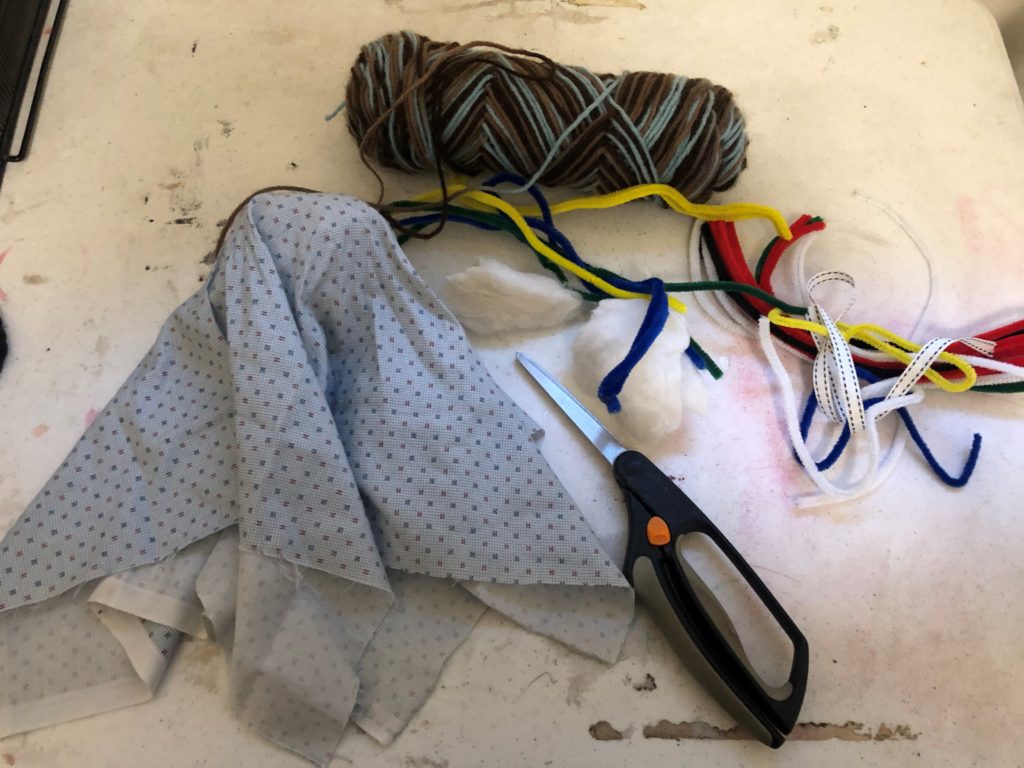

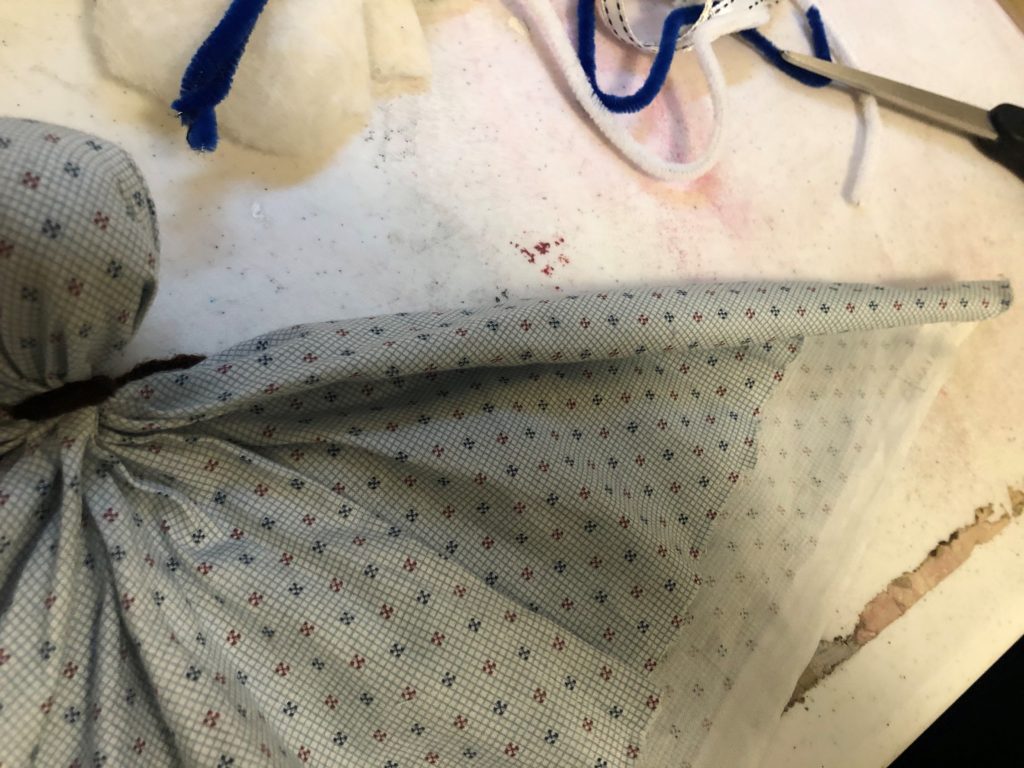

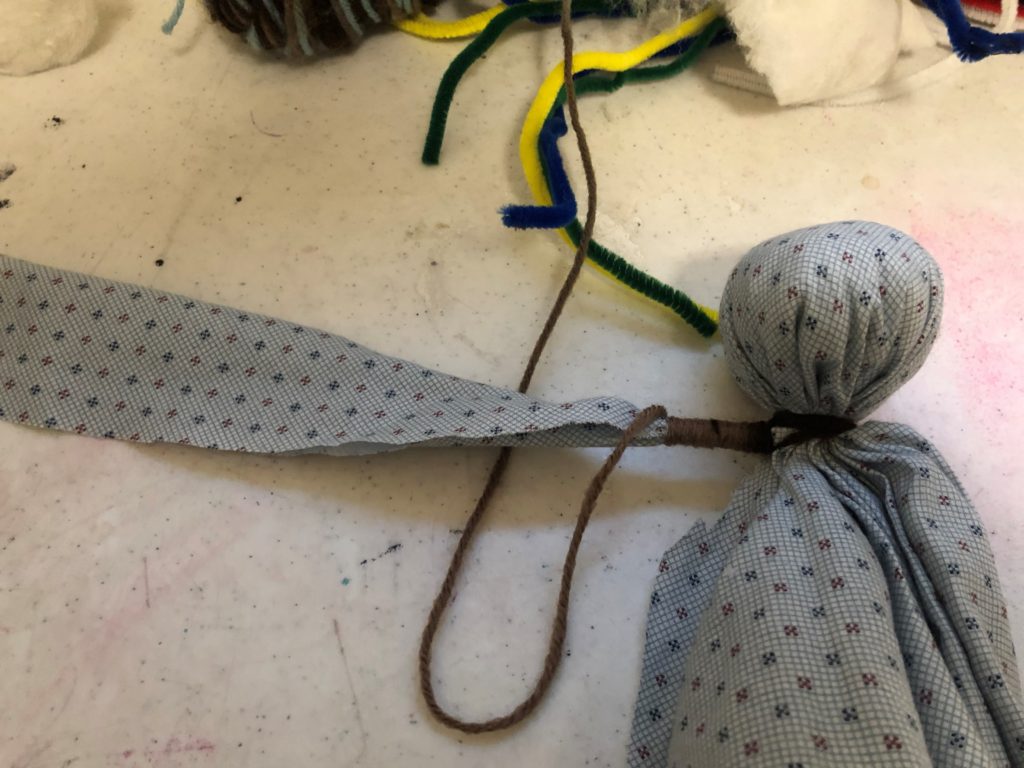
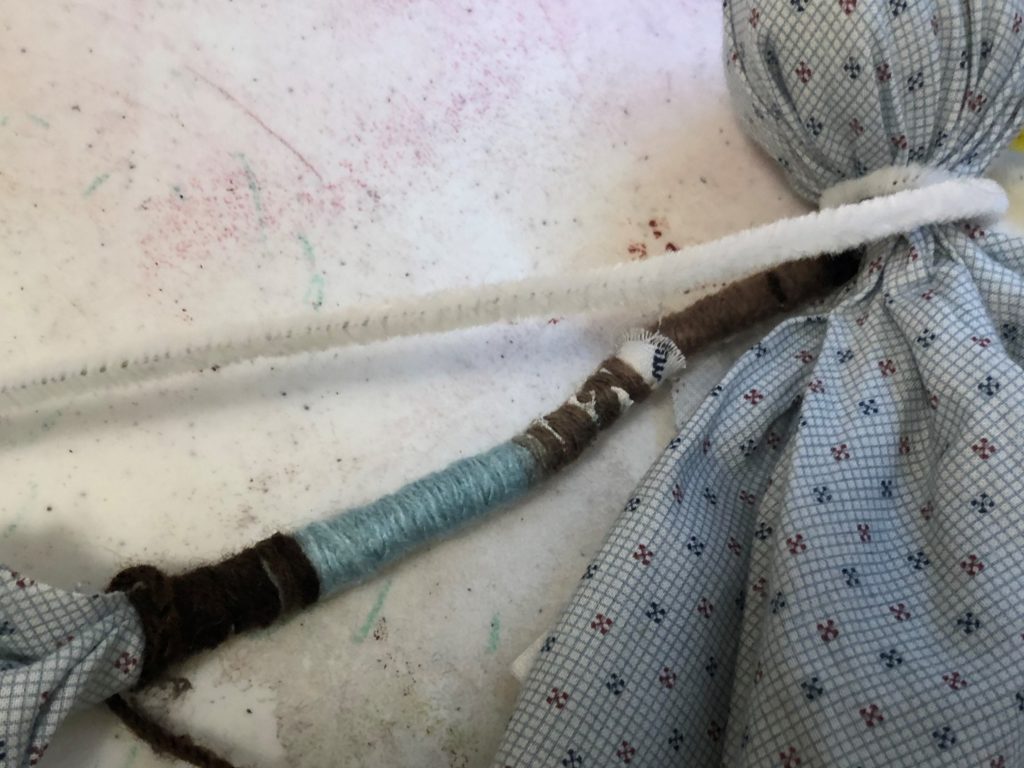


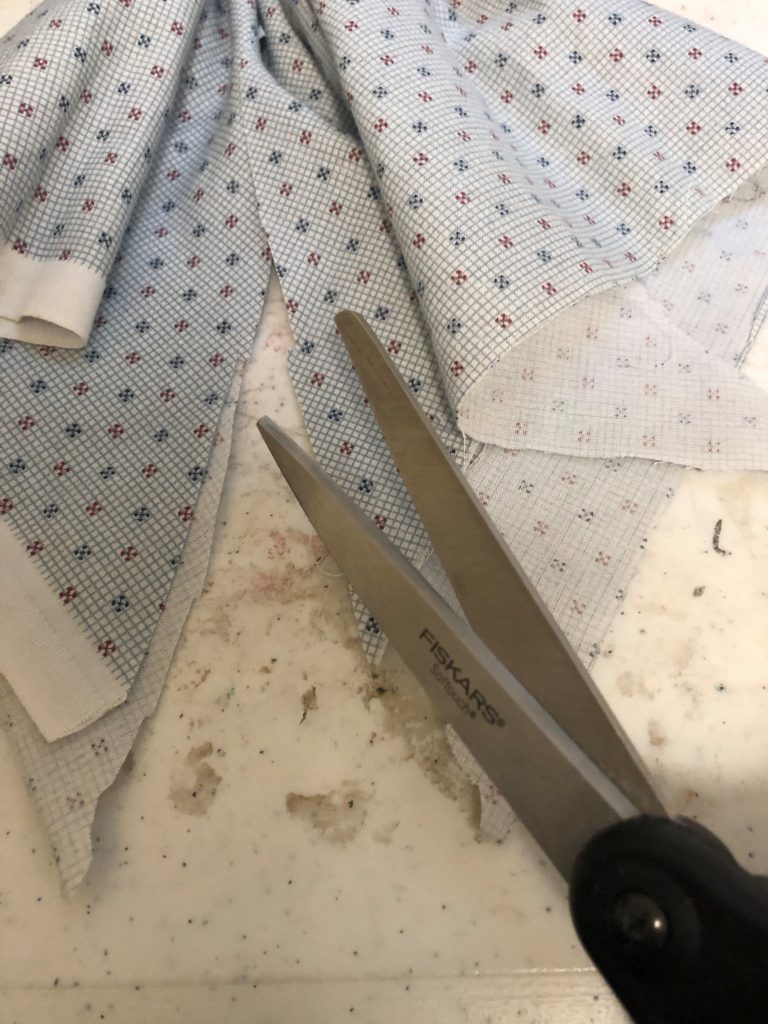
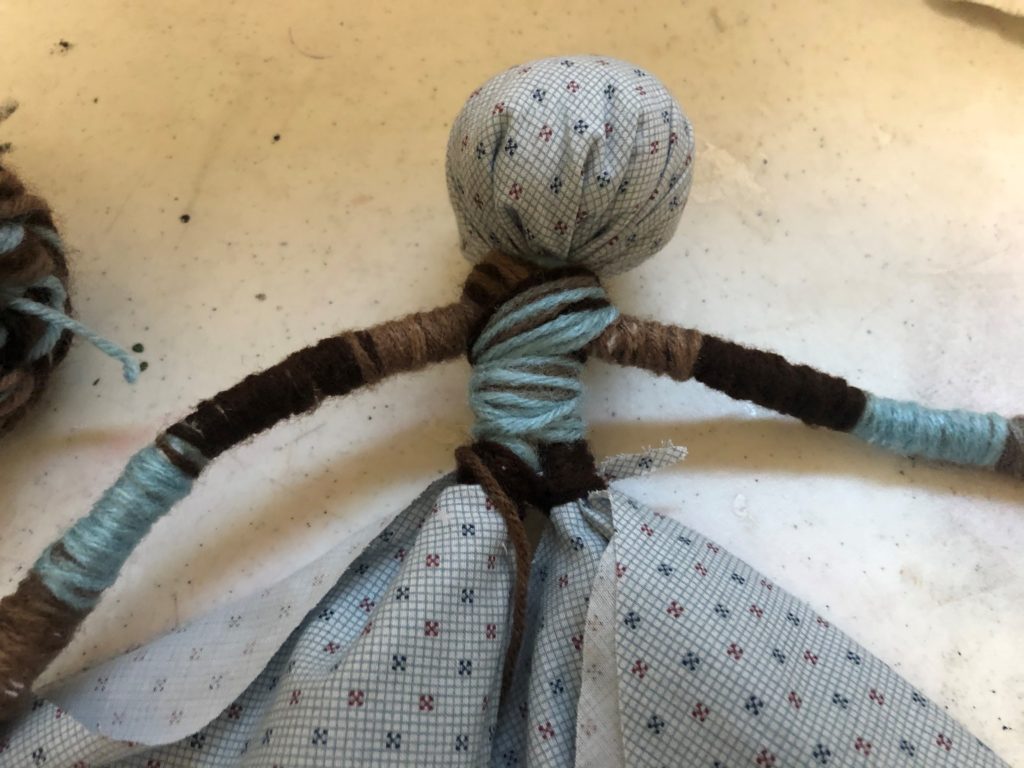
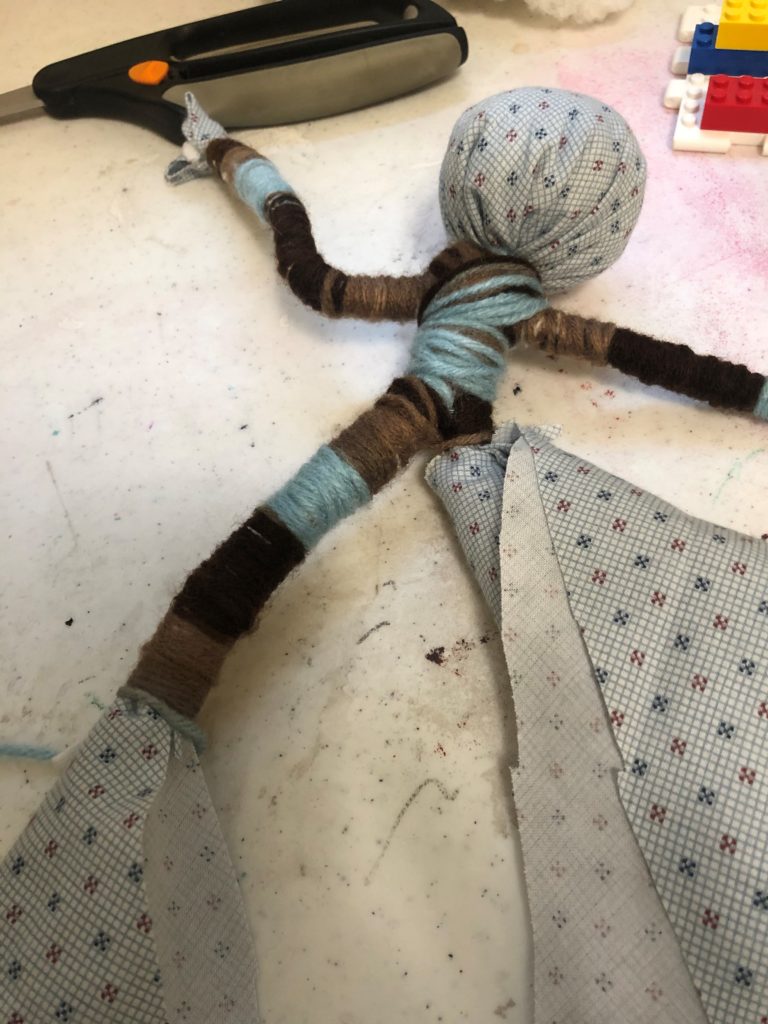
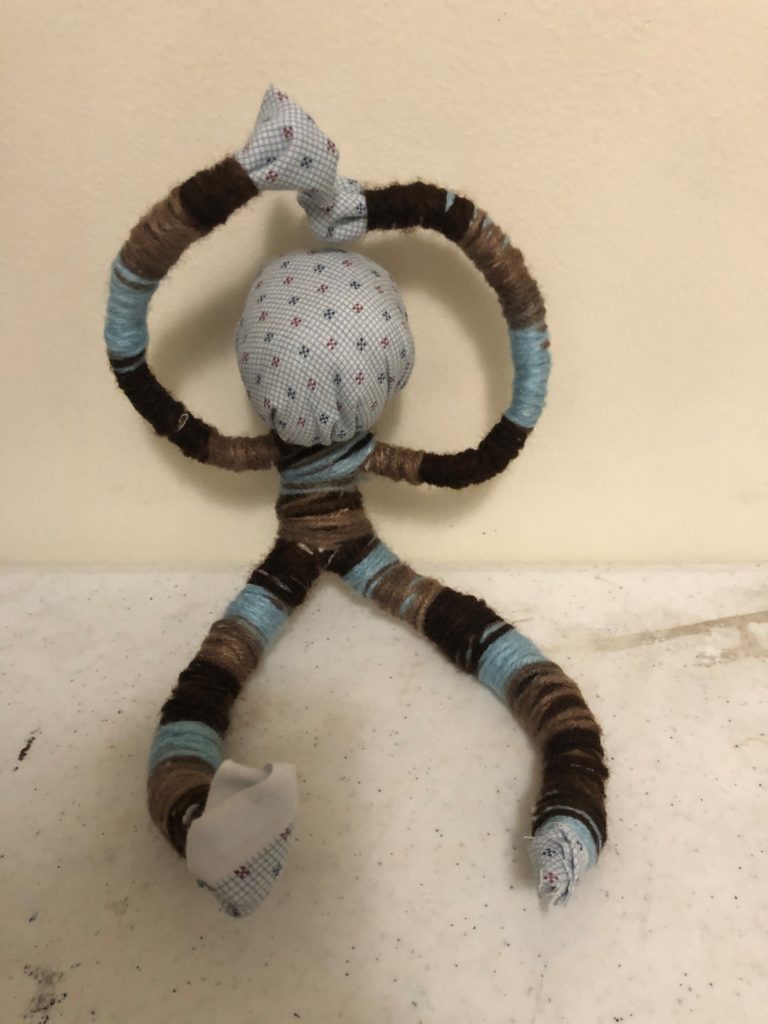
Additional Resources for making dolls: